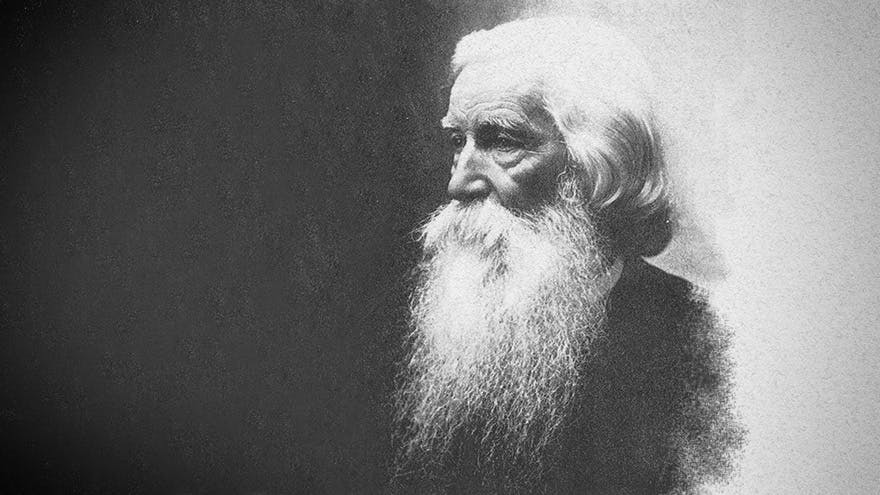History of Christian Missions: John Paton

This is the fourth in our series on Scotland’s involvement in the Great Century of Christian Missions. Today, we’re looking at another Scottish missionary who played a part in the movement.
John Paton was born in 1824 in Dunfries, Scotland. It was here that the seeds of John Paton’s missionary call were planted, watered, and cultivated. Growing up, he heard his father pray zealous missionary petitions. His father “poured out his whole soul with tears for the conversion of the heathen world to the service of Jesus… we all felt as if in the presence of the living Saviour…”1 The young boy listened to the prayers of his father at home and wondered if he, himself, had a part to play in that lost world.
Paton is another example of a Scotsman who the Lord called in part through time spent in academic lectures halls. He credited his studies at the Reformed Presbyterian Divinity Hall as one of the factors that led to his call to the Pacific islands. He wrote, “Happy in my work as I felt, and successful by the blessing of God, yet I continually heard, and chiefly during my last years in the Divinity Hall, the wail of the perishing heathen in the South Seas.”2 The missionary seeds planted in the home were watered in academic halls.
During Paton’s daily time in the Scriptures and prayer, the Holy Spirit cultivated a heart prepared to sacrifice local ministry success, proximity to a loving family, and physical safety to take the gospel to the New Hebrides. The Reformed Presbyterian Church of Scotland had been advertising for a missionary to travel to the islands in the South Pacific, and Paton resolved to answer the call.
After his conversion, Paton had worked as an evangelist in the hard streets of Glasgow. When he shared his call to the foreign mission fields, well-meaning individuals sought to convince him to stay in Glasgow by predicting that the new Christians that he had been discipling in Glasgow would go astray if he left for overseas work.3 Nevertheless, Paton continued on.
Shortly after marrying Mary Ann Robson, Paton travelled with his new spouse to the islands. Within a year of their marriage, Mary Ann died in the New Hebrides along with the Paton’s newborn son. Rather than return home, John pressed onward in his ministry on the island of Tanna. His love for the Lord, his heart for the lost, and his hard-working Scottish upbringing had prepared him for the toil that would lay head.
After three years of ministry, a variety of factors, including sickness brought to the islands by European sailors and opposition to his ministry efforts, led to Paton having to flee the island to save his life.
Paton briefly returned to the United Kingdom in 1863, and he proved to be an astute fundraiser. He raised thousands of dollars during this trip, and he also married again, to his wife Margaret.
Given the continued danger on the island of Tanna, when he returned, he served on the island of Aniwa. Orphanages, schools, and a church were set up. Paton served in the New Hebrides until the early 1900s because of his resolve, faith, and love for the people.
Over the years, dozens of missionaries joined his work there, and Paton travelled around the world, raising workers and funds for the work that remained. Two of his own sons helped take his place in ministry in the New Hebrides; one eventually served on the island of Tanna where his father had evaded capture and death forty years earlier. The baton passed to the next generation.4
Check in next Wednesday for our next post on Scottish missionaries during the Great Century.
1John G Paton, Missionary to the New Hebrides: An Autobiography 12th edition (Edinburgh, UK: Banner of Truth, 1965), 21.
2Paton, Missionary to the New Hebrides, 52.
3Paul Schlehlein, John G. Paton: Missionary to the Cannibals of the South Seas (Edinburgh, UK: Banner of Truth, 2017), 18.
4Ibid., 72.
Want More Content Like This?
We will deliver Reaching & Teaching articles and podcast episodes automatically to your inbox. It's a great way to stay on top of the latest news and resources for international missions and pastoral training.
